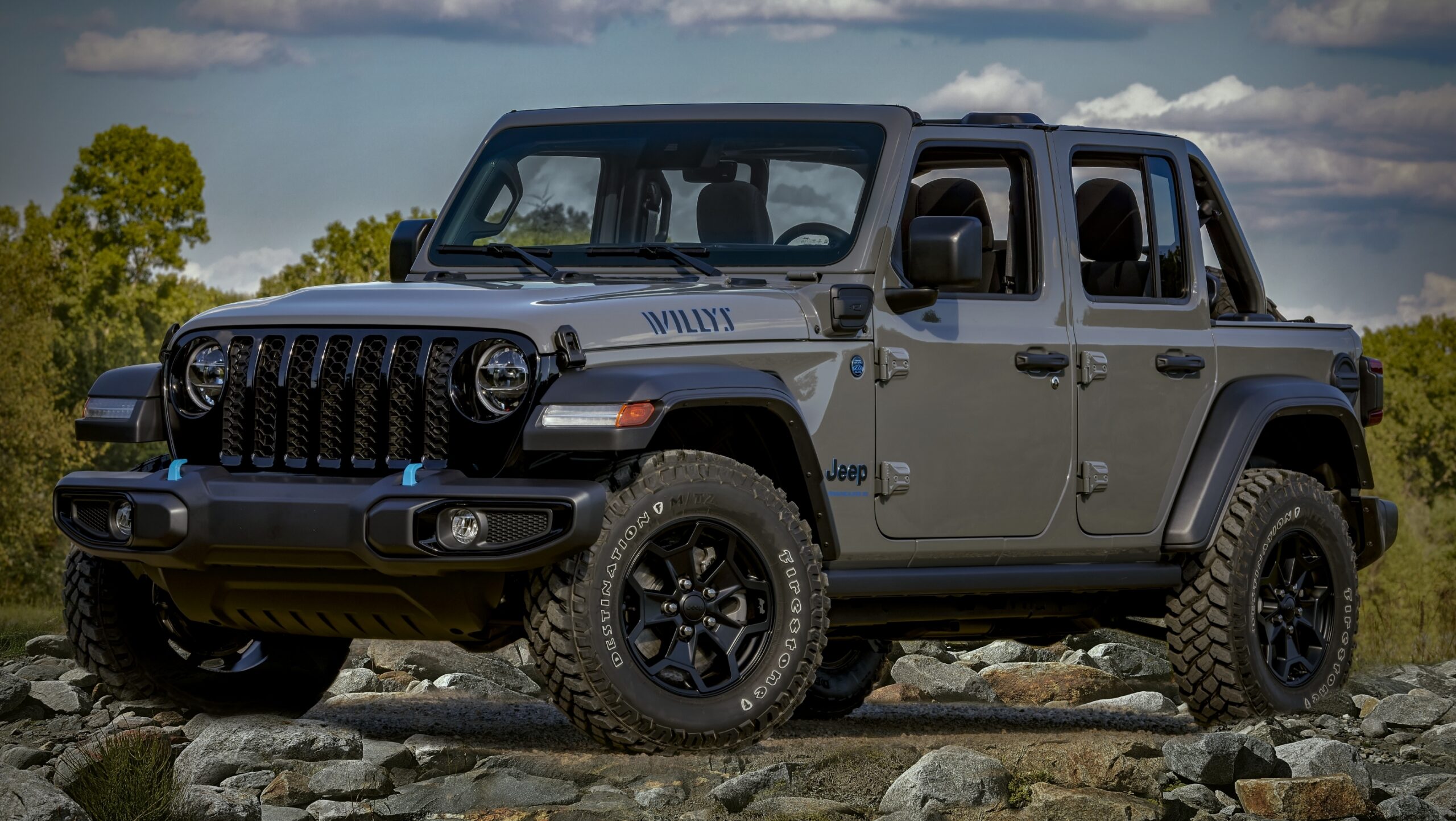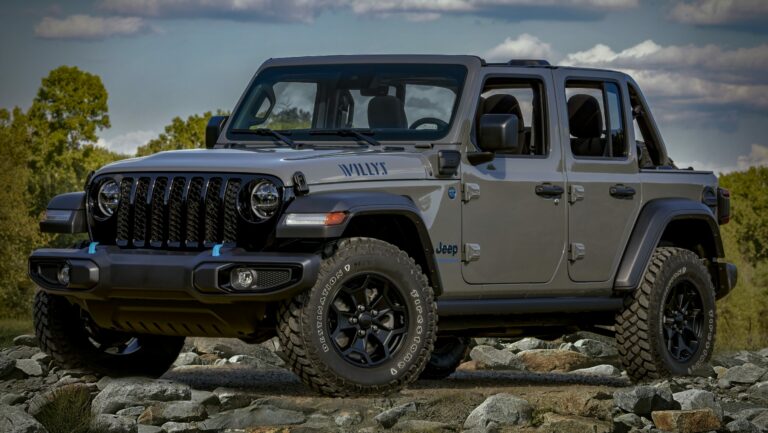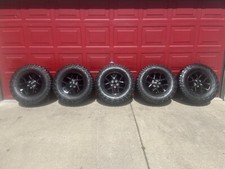Jeep Wranglers For Sale 1980 To 2000: A Comprehensive Buyer’s Guide
Jeep Wranglers For Sale 1980 To 2000: A Comprehensive Buyer’s Guide jeeps.truckstrend.com
For many automotive enthusiasts and off-road adventurers, the Jeep Wrangler isn’t just a vehicle; it’s a symbol of freedom, rugged capability, and an enduring American spirit. Among the various generations, the period from 1980 to 2000 holds a particularly special place. This two-decade span encompasses a fascinating evolution, from the classic CJ-7 to the introduction of the YJ and the highly revered TJ, each offering a distinct slice of Jeep history and performance.
If you’re in the market for a vintage Wrangler, understanding the nuances of these model years is paramount. This guide is designed to be your definitive resource, navigating the characteristics, benefits, challenges, and practical considerations involved in acquiring a Jeep Wrangler from this iconic era. Whether you’re a seasoned Jeeper or a newcomer drawn to the allure of these legendary machines, preparing yourself with knowledge will ensure a rewarding buying experience.
Jeep Wranglers For Sale 1980 To 2000: A Comprehensive Buyer’s Guide
The Evolution of the Wrangler: CJ-7, YJ, and TJ
The 1980-2000 period saw significant transformations in the Jeep Wrangler lineage, each iteration building upon its predecessor while retaining the core values of off-road prowess and open-air driving.
-
Jeep CJ-7 (1980-1986): The End of an Era
The CJ (Civilian Jeep) series is the direct descendant of the original military Jeeps. The CJ-7, produced until 1986, is often considered the last "true" classic Jeep by purists. It features a slightly longer wheelbase than its CJ-5 predecessor, improving ride quality and stability. Known for its utilitarian design, leaf-spring suspension, and a range of robust engine options including the venerable 4.2L (258 cu in) AMC I6 and various V8s (though less common in later years), the CJ-7 embodies raw, unadulterated off-roading. Its iconic round headlights are a signature feature. 
Jeep Wrangler YJ (1987-1995): The Transition
In 1987, the CJ-7 was replaced by the all-new Wrangler YJ. This marked a deliberate move by AMC (and later Chrysler) to make the Jeep more appealing to a broader market, offering improved on-road comfort and safety features. The most visually striking change was the adoption of rectangular headlights, a design choice that remains controversial among purists but helped differentiate it from its ancestors. The YJ retained the leaf-spring suspension of the CJ but introduced the more reliable 4.0L (242 cu in) AMC I6 engine in 1991, which would become legendary.-
Jeep Wrangler TJ (1997-2000): The Modern Classic
After a brief hiatus in 1996, the Wrangler returned in 1997 as the TJ, a revolutionary step forward that blended classic aesthetics with modern engineering. The most significant change was the return to round headlights and, more importantly, the adoption of a coil-spring suspension system (Quadra-Coil) derived from the Grand Cherokee. This dramatically improved ride quality, handling, and off-road articulation, making the TJ arguably the most capable stock Wrangler to date. The 4.0L I6 remained the workhorse engine, cementing its reputation for reliability and torque.
Why Buy a 1980-2000 Jeep Wrangler?
Purchasing a Wrangler from this era offers a unique blend of benefits that often outweigh the challenges of owning an older vehicle.
- Classic Appeal & Nostalgia: These Wranglers possess an undeniable vintage charm that newer models can’t replicate. The CJs evoke a sense of history, while YJs and TJs represent a specific period of rugged simplicity.
- Off-Road Prowess: Despite their age, these vehicles remain highly capable off-road. Their relatively lightweight construction, short wheelbases (especially the two-door models), and robust 4×4 systems make them excellent for tackling trails.
- Simplicity & Modifiability: Compared to modern vehicles laden with complex electronics, 1980-2000 Wranglers are mechanically simpler, making them easier for DIY enthusiasts to maintain, diagnose, and repair. The aftermarket support for these models is immense, offering an endless array of customization options.
- Affordability: Generally, the entry price for these older Wranglers is significantly lower than for new or even recent used models, making Jeep ownership accessible to a wider audience.
- Strong Resale Value: Well-maintained and unmolested Wranglers from this period tend to hold their value remarkably well, often appreciating if they are in exceptional condition or rare configurations.
Key Considerations When Buying
While the appeal is strong, it’s crucial to approach the purchase with a clear understanding of what to look for and what to expect.
- Rust: The Ultimate Enemy: This is, without a doubt, the most critical factor. Frame rust, especially around the control arm mounts, skid plates, and suspension components, can be a deal-breaker. Check the body tub, particularly the floorboards, rocker panels, and rear quarter panels. Surface rust is manageable, but extensive rot indicates a much larger, potentially structural, problem. Pay extra attention if the Jeep spent its life in a rust-belt state.
- Engine Options and Reliability:
- 4.0L AMC I6 (YJ 1991-1995, TJ 1997-2000): This inline-six is legendary for its bulletproof reliability, ample low-end torque, and longevity. It’s generally the most sought-after engine. Check for oil leaks (especially valve cover and rear main seal), coolant leaks, and general running smoothness.
- 2.5L AMC I4 (YJ & TJ): A four-cylinder option that offers better fuel economy but significantly less power, especially if larger tires are installed. It’s still reliable but can feel underpowered.
- 4.2L AMC I6 (CJ-7, YJ 1987-1990): A good, torquey engine, but often equipped with a notoriously problematic Carter BBD carburetor. Many owners swap this for a Weber or fuel injection system.
- V8s (CJ-7): Less common, but powerful. Check for signs of overheating or neglected maintenance.
- Transmission Types:
- Manual: Various manual transmissions were offered (e.g., AX-5, AX-15, NV3550). Check for smooth shifting, clutch engagement, and excessive noise.
- Automatic: The 3-speed Torqueflite (CJ-7, YJ) and 32RH (TJ) are robust but less fuel-efficient than manuals. Check fluid levels and shifting performance.
- Suspension:
- Leaf Spring (CJ-7, YJ): Simple and durable, but can lead to a stiffer, bouncier ride on-road. Check for cracked leaves, worn bushings, and seized bolts.
- Coil Spring (TJ): Offers a much smoother ride and superior articulation. Inspect coil springs for cracks, shock absorbers for leaks, and control arm bushings for wear.
- Soft Top/Hard Top: Check the condition of soft tops for rips, tears, and clarity of windows. Hardtops should be free of cracks and have intact seals. Leaks are common in both.
- Electrical Issues: While simpler, age can lead to wiring issues, faulty sensors, or non-functional gauges. Check all lights, wipers, HVAC, and power windows (if equipped).
- Previous Modifications: Many Wranglers are modified. Assess the quality of any aftermarket parts or installations. Poorly installed lift kits, oversized tires without re-gearing, or shoddy electrical work can lead to expensive problems. A well-documented history of professional modifications is a plus.
The Pre-Purchase Inspection: A How-To Guide
A thorough inspection is non-negotiable. If you’re not mechanically inclined, hire a trusted mechanic specializing in 4x4s or classic vehicles.
-
Visual Walk-Around:
- Body: Look for rust, dents, poorly repaired bodywork, and uneven panel gaps. Check the integrity of the roll bar.
- Frame: Get under the vehicle with a flashlight. Tap the frame with a small hammer to check for thin spots from rust. Pay attention to body mounts, spring perches, and skid plate attachments.
- Tires: Check tread depth and even wear. Misaligned or worn tires can indicate steering or suspension issues.
- Suspension: Look for broken springs, leaky shocks, worn bushings, and damaged control arms (TJ) or U-bolts (CJ/YJ).
- Undercarriage: Check for fluid leaks (oil, coolant, transmission, differential), damaged drive shafts, and exhaust system integrity.
-
Engine Bay:
- Look for fluid leaks, frayed belts, cracked hoses, and corrosion on battery terminals.
- Check the oil and coolant levels and condition.
- Listen for unusual noises upon startup and idling (knocks, ticks, squeals).
-
Interior:
- Check for water damage or mildew, especially under the carpets.
- Test all gauges, lights, HVAC controls, and the radio.
- Inspect seats for rips and tears. Ensure seatbelts are functional.
-
Test Drive:
- Engine Performance: Check for smooth acceleration, no hesitation, and appropriate power delivery.
- Transmission: Listen for clunking or grinding. Test shifting in both manual and automatic transmissions.
- Steering: Should be responsive with minimal play. Listen for groans or clunks when turning.
- Brakes: Should be firm and stop the vehicle smoothly without pulling.
- 4WD Engagement: Find a safe, unpaved area to test the 4-wheel drive system (2H, 4H, 4L). Ensure it engages and disengages smoothly. Listen for grinding noises.
- Road Manners: Pay attention to vibrations, excessive wind noise, and alignment.
Common Upgrades and Maintenance for Vintage Wranglers
Once you own a 1980-2000 Wrangler, be prepared for ongoing maintenance due to its age. However, this also opens up a world of customization.
- Essential Maintenance: Regular oil changes, fluid checks (transmission, differentials, transfer case), brake inspections, and universal joint lubrication are critical. Pay attention to steering components (tie rods, drag links) and bushings, as these wear out over time.
- Popular Upgrades:
- Lift Kits: Ranging from mild 1-2 inch spacers to extensive 4+ inch suspension lifts, these enhance off-road capability and allow for larger tires.
- Larger Tires: Improve traction and ground clearance. Ensure proper gearing if going significantly larger.
- Armor: Skid plates, rock sliders, and heavy-duty bumpers protect vital components during off-roading.
- Winch: A recovery tool for getting unstuck or helping others.
- Lighting: Upgraded headlights (LED conversions are popular) and auxiliary lights for better visibility.
- Interior Comfort: Aftermarket seats, sound systems, and sound deadening can improve the daily driving experience.
Practical Advice and Actionable Insights
- Set a Realistic Budget: Factor in not just the purchase price but also immediate maintenance (fluids, tune-up), potential repairs (rust remediation, worn parts), and any desired modifications.
- Research Specific Years: While general advice applies, specific model years within CJ, YJ, and TJ can have unique quirks or common issues. Dive deep into owner forums for the exact year you’re considering.
- Join the Community: Online forums (JeepForum.com, WranglerForum.com) and local Jeep clubs are invaluable resources for advice, parts, and camaraderie.
- Be Patient: The right Wrangler might not appear overnight. Don’t rush into a purchase, especially if you find significant red flags. There are plenty of these vehicles out there.
Jeep Wranglers For Sale 1980 To 2000: Estimated Price Table
It’s crucial to understand that prices for 1980-2000 Jeep Wranglers vary wildly based on condition, mileage, modifications, engine type, transmission, geographic location, and originality. A highly original, low-mileage example will fetch significantly more than a heavily modified or rusty one. The table below provides a general estimate for a stock or lightly modified vehicle.
| Model / Year Range | Condition: Poor (Rust, Mechanical Issues) | Condition: Fair (Needs Work, Driveable) | Condition: Good (Solid, Well-Maintained) | Condition: Excellent (Original/Restored) |
|---|---|---|---|---|
| CJ-7 (1980-1986) | $3,000 – $7,000 | $7,000 – $12,000 | $12,000 – $20,000 | $20,000 – $35,000+ |
| YJ (1987-1995) | $2,500 – $6,000 | $6,000 – $10,000 | $10,000 – $15,000 | $15,000 – $25,000+ |
| TJ (1997-2000) | $4,000 – $8,000 | $8,000 – $13,000 | $13,000 – $18,000 | $18,000 – $30,000+ |
Note: "Poor" condition often implies significant rust or major mechanical overhaul needed. "Excellent" means minimal to no rust, original components (or high-quality restoration), and low mileage for its age.
Frequently Asked Questions (FAQ)
Q1: Which is better, a YJ or a TJ?
A1: It depends on your priorities. The YJ (1987-1995) retains the leaf-spring suspension and is often seen as a more direct descendant of the CJ, with its controversial square headlights. The TJ (1997-2000) introduced coil-spring suspension, offering a significantly smoother ride and better articulation off-road, along with a return to round headlights. For daily driving comfort and off-road performance, the TJ is generally preferred. For classic aesthetics and simplicity, some prefer the YJ or CJ.
Q2: What’s the best engine for these Wranglers?
A2: The 4.0L AMC Inline-6 engine (available in YJ from 1991-1995 and all TJs) is widely considered the best choice. It’s renowned for its robust reliability, strong low-end torque, and long lifespan. Parts are readily available, and it’s well-supported by the aftermarket.
Q3: Are parts hard to find for older Wranglers?
A3: Generally, no. Thanks to the immense popularity and modifiability of Wranglers, there’s a vast aftermarket for replacement parts, upgrade components, and even reproduction body panels for all generations, including CJ, YJ, and TJ. Mechanical parts for the common engines and transmissions are also widely available.
Q4: How much should I expect to spend on maintenance for a 1980-2000 Wrangler?
A4: This varies greatly depending on the vehicle’s initial condition. Budget for regular fluid changes, basic tune-ups, and potentially replacing age-related wear items like bushings, hoses, belts, and universal joints. If you buy a vehicle with known issues (e.g., rust, leaks), factor in a significant budget for repairs. A good rule of thumb is to set aside 10-15% of the purchase price annually for maintenance and unexpected repairs.
Q5: Can I daily drive a 1980-2000 Wrangler?
A5: Yes, many people daily drive them, especially TJs. They are reliable vehicles. However, be aware that they are older, less refined, and often less fuel-efficient than modern cars. Wind noise, a less comfortable ride (especially CJs/YJs), and a lack of modern safety features are common trade-offs. For shorter commutes or as a secondary fun vehicle, they excel.
Conclusion
The appeal of Jeep Wranglers from 1980 to 2000 is undeniable. These vehicles offer a unique blend of classic styling, genuine off-road capability, and a mechanical simplicity that appeals to enthusiasts and DIYers alike. Whether you’re chasing the raw heritage of a CJ-7, the transitional charm of a YJ, or the refined ruggedness of a TJ, the journey of finding your perfect vintage Wrangler is an adventure in itself.
By focusing on a thorough pre-purchase inspection, understanding the common pitfalls like rust, and appreciating the distinct characteristics of each model, you can make an informed decision. Owning a Wrangler from this era isn’t just about driving; it’s about joining a passionate community and embracing a lifestyle. With careful consideration and a bit of patience, you can find a piece of automotive history that will provide countless miles of open-air freedom and off-road excitement for years to come.




